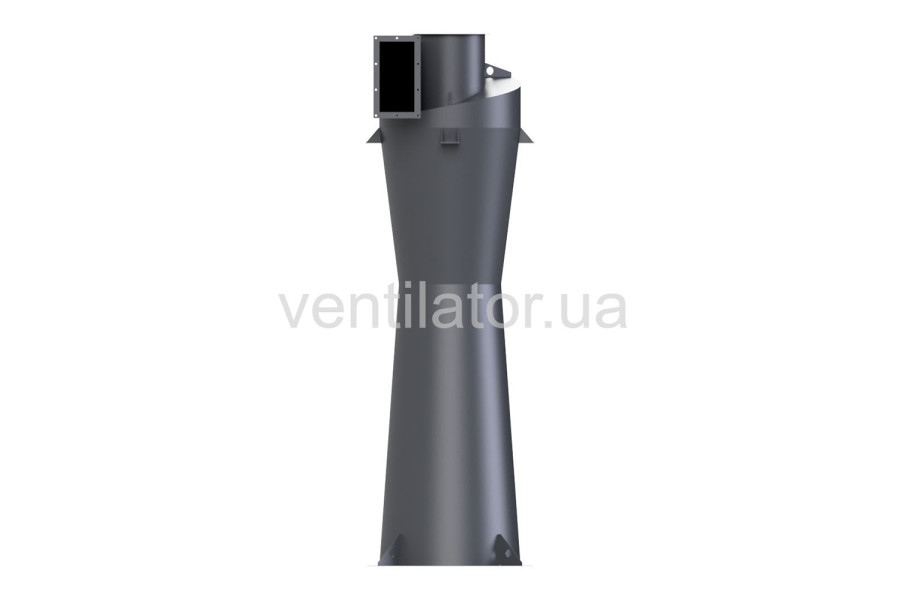




- RISI – cyclone with a coagulator cone;
- 10 – cyclone size designation (defines the overall dimensions and performance of the model).






General information about the cyclone RISI-10
The cyclone RISI-10 is used in industrial ventilation for cleaning gas-air mixtures from dust, including sticky and fibrous types. The unit was designed by the “Rostov Engineering and Construction Institute” (RISI). It is recognized as one of the best in Ukraine and CIS countries for treating gases containing complex pollutants that other types of cyclones cannot effectively remove.
RISI cyclones are used in the woodworking and light industries, as well as in other manufacturing sectors. They are applied for removing dust from the air, in particular:
Cyclones can be combined into battery installations, which provide even higher cleaning efficiency compared to single units. The efficiency depends on the modification of the unit, the number of cyclones in the group, and the thickness of the housing metal. With a low concentration of abrasive particles, the service life of a cyclone reaches up to 10 years. Installation is possible directly in workshops – in exhaust systems or under hoods. If the concentration of abrasive particles is high, cyclones are manufactured from metal with a thickness of 3 mm.
Main advantages of the cyclone RISI-10:
The normal inlet velocity of dusty air is 14–17 m/s. The cyclone resistance is 720–1050 Pa. The products are manufactured in UHL climate design and comply with placement categories 1, 2, 3, 4 according to GOST 15150-69. They are used in aspiration systems.
Operating principle of the cyclone RISI-10
Cleaning of the gas-air mixture in the cyclone is carried out under the action of centrifugal force. After entering, the airflow swirls, and dust particles move from the center to the walls of the housing. Then they spiral down into the hopper, while the cleaned gas exits through the upper pipe.
Gas flow in the cyclone RISI-10
Installation of the cyclone RISI-10
Air movement through the cyclone is ensured by a dust fan. Usually, it is installed after the cyclone, but in some cases the fan may be mounted before the unit. Most commonly, fans of type VC 14-46 are used. For joint operation with RISI cyclones, the following fans are also recommended: VCP 5-45, VCP 6-45, VCP 6-46, VCP 7-40.
The proper operation of the unit depends on many factors: the thickness and length of the air duct, the area of the exhaust hood, the type of fan, and the model of the cyclone. A well-designed system ensures durability, efficiency, and reliability.
Design features of the cyclone RISI-10
As standard, cyclones are made of high-quality steel. If required, production from other materials is possible, which are better suited for operation in extreme conditions. All openings are equipped with flanges, which make installation and connection to other system elements easier. There are also adapters of various sizes for connecting to fans and pipelines.
Before delivery to the customer, the units are painted and packed in protective film. Each cyclone is supplied with a hopper. Its size, shape, metal thickness, and price depend on operating conditions and customer requirements. Hoppers are manufactured taking into account the cleaning frequency: for one shift, several shifts, etc.
There are no reviews for this product.
There are no reviews for this product, be the first to leave your review.